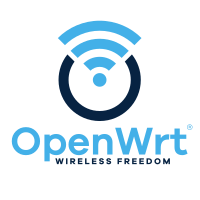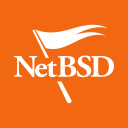PINE A64: Software Releases
This page contains a list of all available software releases and other resources for the PINE A64 and PINE A64+.
Linux
AOSC

AOSC OS is a general purpose Linux distribution that strives to simplify user experience and improve free and open source software for day-to-day productivity. To learn more about AOSC, please visit the official AOSC website.
Download:
- https://aosc.io/downloads/ (supports the microSD card and eMMC, 8GB or more)
| Default credentials | |
|---|---|
aosc | anthon |
Arch Linux ARM

Arch Linux ARM is a distribution of Linux for ARM computers.
Installation:
Armbian

Armbian is a Linux distribution designed for ARM boards. They are usually Debian or Ubuntu flavored.
Download:
Debian

Debian is an operating system and a distribution of free software. See the forum thread here.
Download:
- Debian 11 Bullseye (recommended)
- Debian 12 Bookworm
- Daily netboot images
Instructions:
- Download:
firmware.pine64_plus.img.gz - Download:
partition.img.gz - Create the disk image:
- For Linux:
zcat firmware.pine64_plus.img.gz partition.img.gz > complete_image.img - For Mac:
gzcat firmware.pine64_plus.img.gz partition.img.gz > complete_image.img
- For Linux:
- Write the image to your boot device:
- For Linux:
dd if=complete_image.img of=your_chosen_boot_device bs=4M - For Mac: see Getting started
- For Linux:
Notes:
- An Ethernet connection is required for the above installer
DietPi

DietPi is a lightweight yet easy to setup and feature-rich Linux distribution, based on Debian. To find out more about DietPi, please visit the official documentation. Discuss the PINE A64 build on the PINE64 forum thread.
Download:
- Debian 11 Bullseye (supports the microSD card and eMMC, 4GB or more)
- Debian 12 Bookworm (supports the microSD card and eMMC, 4GB or more)
| Default credentials | |
|---|---|
root | dietpi |
FreedomBox

FreedomBox is a private server for non-experts: it lets you install and configure server applications with only a few clicks. For more information about FreedomBox, please visit http://www.freedombox.org.
Download:
Notes:
- This is a headless build, not HDMI output.
- Please plug-in Ethernet cable first before initial power up. After power up for 10 minutes, using browser and type in https://fredombox.local to setup. Browser may warms for unsecure site and please proceed with exception.
- Freedom Manual: https://wiki.debian.org/FreedomBox/Manual
LibreELEC

LibreELEC is a “Just enough OS” Linux distribution combining the Kodi media center with an operating system.
Download:
- 512MB PINE A64: direct download from Libreelec nightly build site (look for LibreELEC-A64.arm-…-nightly-xxxxxxxx-xxxxxxx-pine64.img.gz)
- 1GB/2GB PINE A64+ Board: direct download from Libreelec nightly build site (look for LibreELEC-A64.arm-…-nightly-xxxxxxxx-xxxxxxx-pine64-plus.img.gz)
Notes:
- Nightly build for microSD boot
motionEyeOS

motionEyeOS is a Linux distribution that turns a single-board computer into a video surveillance system. The OS is based on BuildRoot and uses motion as a backend and motionEye for the frontend. Visit the motionEyeOS GitHub and its GitHub Wiki for more information
Download:
- 1GB/2GB PINE A64(+): Direct download from GitHub (look for motioneyeos-pine64-xxxxxxxx.img.xz)
Notes:
- Suitable for 1GB/2GB PINE A64(+) variants
- There are 2 ways to interact with the OS:
- Scan for its IP with hostname MEYE-* and go to the admin web interface
https://[IP]and after login, you should able to see the output of the CAMERA MODULE on the web interface - Use the PINE64 USB SERIAL CONSOLE/PROGRAMMER and login
- Scan for its IP with hostname MEYE-* and go to the admin web interface
| Default credentials | |
|---|---|
admin | none |
NEMS Linux

NEMS stands for Nagios Enterprise Monitoring Server and it is a modern pre-configured, customized and ready-to-deploy Nagios Core image designed to run on low-cost micro computers. To find out more on NEMS Linux, please visit their site.
Download:
- Download torrent seed from NEMS Linux (2.66GB, MD5 of the xz file is ac508549a829021491cfa23aeb18a063)
- Direct download from pine64.org (2.66GB, MD5 of the xz file is ac508549a829021491cfa23aeb18a063)
Notes:
- Suitable for all 512MB/1GB/2GB PINE A64(+) variants
| Default credentials | |
|---|---|
nemsadmin | nemsadmin |
openSUSE

openSUSE is a free and open source RPM-based Linux distribution developed by the openSUSE project. More details can be found under https://en.opensuse.org/HCL:Pine64.
Download:
- Images
- Headless build: Direct download
OpenWRT

The OpenWrt Project is a Linux operating system targeting embedded devices.
Download:
- Direct download (look for pine64_pine64-baseboard-ext4-sdcard.img.gz and pine64_pine64-baseboard-squashfs-sdcard.img.gz)
Notes:
- OpenWRT community build for microSD boot.
- This is headless build, please use serial console to configure
| Default credentials | |
|---|---|
| Default user | Use the command passwd |
BSD
NetBSD

NetBSD is a free, fast, secure, and highly portable Unix-like Open Source operating system. To learn more about NetBSD please visit NetBSD main page.
Download:
- Direct download (345MB, select PINE A64 / PINE A64+)
Notes:
- NetBSD community build for microSD boot
- Instructions concerning enabling SSH can be found here
| Default credentials | |
|---|---|
root and SSH | none |
Windows 10 IoT

Download:
- Windows IoT direct download from pine64.org (957MB, MD5 of FFU file ACA617C0C9CEDA705DD510BF041E79B4)
Notes:
- PINE64 Win10 IoT build already passed the Microsoft Azure certification
- For step by step installation process, please follow this github link
- For release note, please follow this github link
- For Microsoft Azure IoT SDKs, please follow this github link
Changelog for Win10 IoT 10.0.15063.0_20170602:
- Update Notes since 10.0.15063.0_20170524:
- Fix the failure of default application installation caused by a app certification issue
- Fix that the default application cannot start automatically after installation
- Fix Ethernet initialization problem and now the Ethernet will start successfully every time
- Enable the usermode access for all unusable GPIO pins in Pi-2 bus( later provide a UWP sample to show how to control these pins )
- Extra Notes:
- If you want to connect a USB peripheral for extension, please connect a USB hub to the lower USB interface as the medium
- Please refer to Part 2 of chapter 3: Debug with a virtual net over USB on how to use the upper USB interface
Changelog for Win10 IoT 10.0.15063.0_20170524:
- Some Updates:
- Update the OS version to build v.10.0.15063.0 (Creators Update)
- New page style of Device Portal, visit
https://deviceipaddr:8080to check it - Built-in Cortana assistant, need to be enabled in settings page in default app and Device Portal
- Support on-screen keyboard, need to be enabled in Device Portal
- Enable 100M Ethernet and fix some bugs
- Support built-in UART bus in A64 SoC(not built in the ffu, later provide driver binary and deployment helper)
- Support built-in IR module in A64 SoC(not built in the ffu, later provide source code and dev doc for developers in community)
- Known Issues:
- Kernel debug is enabled by default. This will slow the bring-up process. If a kernel debug is not necessary for you, visit Device Portal and navigate to Processes->Run Command page, run this command to disable:
Bcdedit /store C:\EFIESP\EFI\Microsoft\boot\BCD /set {default} debug off - An PnP bug in audio device may cause a blue screen when acting software shutdown
- Ethernet device may not start with problem code 12 at the first time to bring up
- Kernel debug is enabled by default. This will slow the bring-up process. If a kernel debug is not necessary for you, visit Device Portal and navigate to Processes->Run Command page, run this command to disable:
Linux BSP SDK
Linux BSP Kernel 4.9
- Direct Download from pine64.org (5.4GB, MD5 of the TAR-GZip file 7736e3c4d50c021144d125cc4ee047a4)
Android SDK
Android Oreo (v8.1)
- Direct Download from pine64.org (24.94GB, MD5 of the TAR-GZip file b0394af324c70ce28067e52cd7bc0c87)
Other resources
- Allwinner PhoenixCard Bootable SD-Card Creator
- Allwinner DragonFace software that will let you edit and modify A64 Stock Android Build PhoenixCard image
Below you will find useful links to various resources and forum threads:


